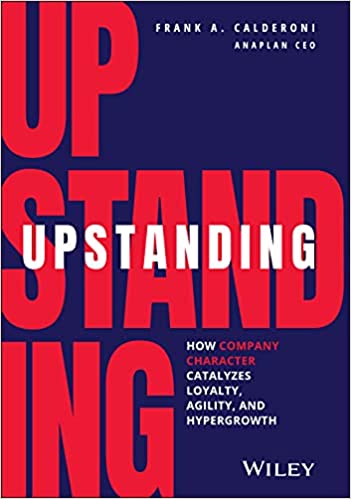
While it’s critical for leadership to embody a company’s values, I don’t believe the CEO needs to be the sole keeper or determinant of its values. Sure, I know that my own personal values have a significant influence over Anaplan’s values—any company’s values are a reflection of what the CEO believes and what behaviors employees are rewarded for. However, the best way for employees in every part of an organization to feel invested in its values is to involve them in their formulation.
When I walked in the door at Anaplan in 2017, the company had a published set of four values: disruption, speed, accountability, and integrity. And although the company had promoted these values internally— and marketed them externally—they were honestly not present in the everyday office life as a foundation of the Anaplan culture. While it could be argued that they reflected where the company had once been, they didn’t inspire or shape the company that we aspired to be in the future.
Reevaluating Corporate Values
So, I decided that we needed to enlist the participation of all our employees to create a new set of values that would be “of the people, by the people, and for the people.” It wasn’t good enough to just “freshen them up.” Our goal was to create values that actually fit our organization and that would help us recruit the people we wanted to work with. I knew that to be successful, we would need to get leadership buy-in—from the executive leadership team to each of our people managers. Integrating the values into Anaplan’s DNA would require that they be maintained, supported, and reinforced. If the leadership team didn’t truly believe in the values we came up with, then there was no way we would be able to maintain our credibility in this effort.
We put together an action plan for creating our new set of core values, involving a broad cross-section of the organization at points in the process. The first step was an initial research phase led by a small team, around the question: “Anaplan connectedness”—what does it mean to be connected? We gathered feedback from teams and best practices from other successful companies with strong cultures to better understand how we could best create values that reflected Anaplan’s personality—something genuine we could live and breathe.
The next step was to host cultural workshops at different Anaplan locations globally over the course of three weeks. These workshops took place in San Francisco, Minneapolis, three different locations in the United Kingdom (London, York, and Maidenhead), and Singapore. We scheduled one additional session for remote employees who didn’t work in these locations. Our goal for each session was to get a list of five bubbled-up values, their definitions, and a set of observable behaviors.
Aligning Results
We next aligned the results of these workshops with our vision team— staying aligned with their progress. We knew that even though Anaplan’s vision doesn’t dictate its culture, it would have a direct effect on the tone and the messaging of the values that we ultimately selected as an organization. To have a cohesive message, both inside and outside the organization, we would need to closely align our vision, mission, and values.
Next, the findings and top values were presented to the executive leadership team (ELT) to get the team’s feedback, consent, and approval of the values and the next steps.
While gaining the approval of the ELT might be the final step in a values exercise in some organizations, we wanted to get all our employees involved again in the process to make sure we got them right. We explained what the top values were and how they were selected, sent out a survey to get additional feedback from employees throughout the company, and then opened up a Slack channel to engage in conversation with our people. The result was a final set of values, definitions, and observable behaviors.
Incorporating New Values
Finally, we rolled out the values to the organization, and to the world at large. Employees created blog posts explaining what the new values meant to them. We knew we would need the management team’s help, so we made the values and observable behaviors a part of our management and leadership training. We wanted the values and behaviors to be a part of our managers’ vocabulary as they trained and coached their teams. In addition, we tied the values to our quarterly recognition program and to our recruitment efforts.
In this way, we created a new set of Anaplan core values—along with definitions and observable behaviors—in an inclusive way that involved every employee. We then fostered the adoption of the values through vocabulary, visibility, and recognition programs, and we measured the engagement of the company and support of the new values through the number of participants at culture workshops, membership in the Slack channel, and total survey takers.
I believe that the values we came up with very accurately reflect who we are as Anaplan, and they have a direct influence on the uniquely powerful culture that we have created. The process took longer than if we had done just a simple update, but the outcome was well worth it. About 70 percent of our employees worldwide voluntarily participated, and our people have embraced these values. That said, I know we’re not perfect and we can never be satisfied with the status quo. We’re always trying new things, learning, exploring, and finding innovative ways to deliver greater value to our customers—using upstanding culture as our foundation and our North Star.




